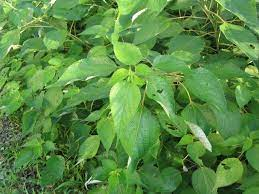Edible frabric
From the book by Chip/Dan Heath: "Made to stick : why some ideas survive and others die" I found the following inspiring story:
To demonstrate harmony between business and the environment, McDonough shares a story that passes the "Sinatra Test." He recounts his collaboration with chemist Michael Braungart in 1993 for Rohner Textil, a Swiss fabric manufacturer producing materials for Steelcase chairs. The challenge was to eliminate toxic chemicals from the fabric-making process, a task considered impossible due to hazardous dye colors and chemical-laden trimmings classified as hazardous waste.
McDonough and Braungart approached chemical companies seeking clean alternatives. Their goal was to replace toxic chemicals with substances safe enough for children to ingest. They tested 8,000 chemicals used in textiles, with only 38 meeting their safety criteria—dubbed "safe enough to eat." This limited set of chemicals enabled the creation of a diverse fabric line.
 |
| Ramie plant |
The fabric they chose was made from natural materials—wool and a plant fiber called ramie. When the production process went online, inspectors from the Swiss government came to check the water flowing out of the plant to make sure chemical emissions were within legal limits. “At first, the inspectors thought their equipment had broken,” McDonough says. The instruments were detecting nothing in the water. Then the inspectors tested the water flowing into the factory, which was Swiss drinking water, and found that the equipment was fine. McDonough says, “The fabrics during the production process were further filtering the water.”
Interestingly, this process not only enhanced safety but also reduced costs by 20%, as toxic chemical-related expenses and worker protection measures were eliminated.
If it only were so easy all the time !



Comments
Post a Comment